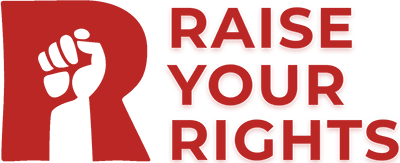
18 Nov What can the federal government do to stop the family and juvenile dependency court crises?
Not even close to what most parents think. Take for example this reporter’s blog on the Covid-19 crises and what the federal government can and can not do, and substitute in the family and juvenile dependency court crisis for the Covid-19 crisis. By the way, we are trying to prevent unwarranted governmental interference, “UGI” and not expand on it. For example, compare Alaska to California and the way their state government should or should not respond to the Covid-19 crises. Take it a step further and compare the very diverse 50 counties in California to each other and the way the Covid-19 crises affects them. We actually want to #PreventUGI and let the very diverse 58 California counties govern themselves. See the whole article in the Wall Street Journal, 11/17/2020, by Betsy McKay:
Q: There are limits to what the federal government can do, right?
A:
In the U.S., most public health powers are given to the states. The federal government can’t impose a national lockdown. The federal government has public-health powers when it comes to the interstate spread of a disease. They have powers in federal buildings. Mr. Biden has said he would make masks mandatory in federal buildings and on interstate transportation — buses, planes, trains. But he can’t do much more than that directly.
Q:
What do we know about his plans?
A:
You can’t require masks as the federal government, but you can certainly fund public-awareness campaigns, enlist celebrities and so on. Mr. Biden has said he’ll work with governors and local leaders to stress the importance of masks and to persuade them to do whatever they have to do to get people to wear masks. Some of Mr. Biden’s advisers have said a mask mandate isn’t going to work in every place. Where governors aren’t receptive, he could work with mayors — go as local as he can.
Q:
What’s the second bucket?
A:
Infrastructure is probably the bigger thing, public-health infrastructure, which will be funded by the federal government. You could see the hiring of thousands of contact tracers to supplement those already out there. That’s money that would likely go to the states, and states and cities would do the hiring. Congress could tie some or all of the pandemic funding for states to what a state does on the public-health front. For most of the pandemic, the federal government has essentially said to the states, “You handle this.”
Q:
Are there effective measures we’re seeing in other countries that just aren’t possible or likely here?
A:
Some Asian countries — Vietnam, China, Singapore, even New Zealand and Australia — culturally, politically and economically, they’ve been able to do things we just could never do in the U.S. Enforced quarantines for example. Literally when people are sick, removing them from their families, as the Chinese did, and not by choice as I understand it.
In Vietnam, life is pretty much back to normal. But what it has taken is stuff we just can’t do here. We can do some of it — they had a great public messaging campaign. But they also had enforced quarantines. If you go there now, you are quarantined for 14 days, period.
In this country, public health officials and experts have said we really should offer people in multigenerational households, or anybody who’s sick, the opportunity to stay somewhere else while they’re sick, so they don’t infect other people. The way we would do it is to give people a choice. But we can’t, nationally or locally, go as far as a lot of countries in Asia have done. Then you look at countries like New Zealand, smaller countries with more compliance. New Zealand is an island, of course, so it was easier to close themselves off.
Q:
Has the state-led approach of the last few months given us examples of what works and what’s possible?
A:
Individual states have done some really clever things and people have followed along to great success.
Here at RaiseYourRights we applaud those efforts and our goal is to #PreventUGI.


